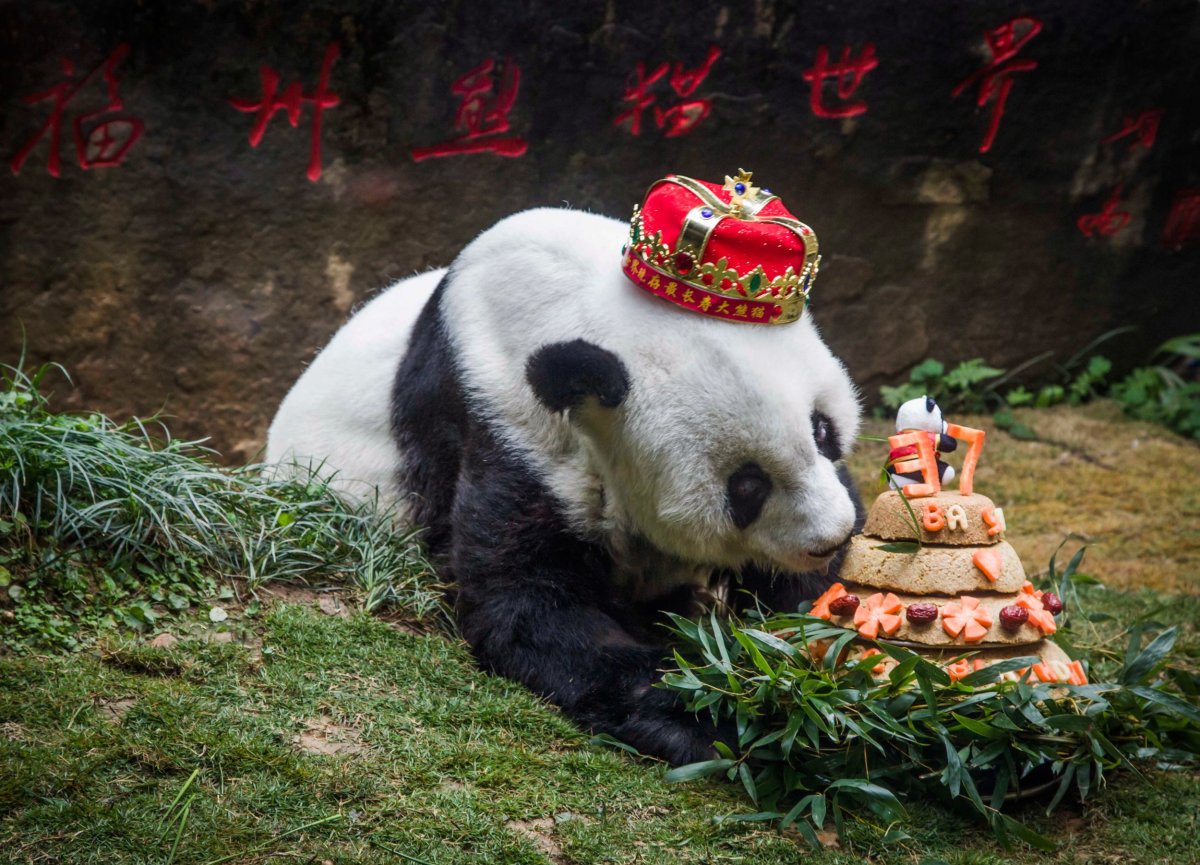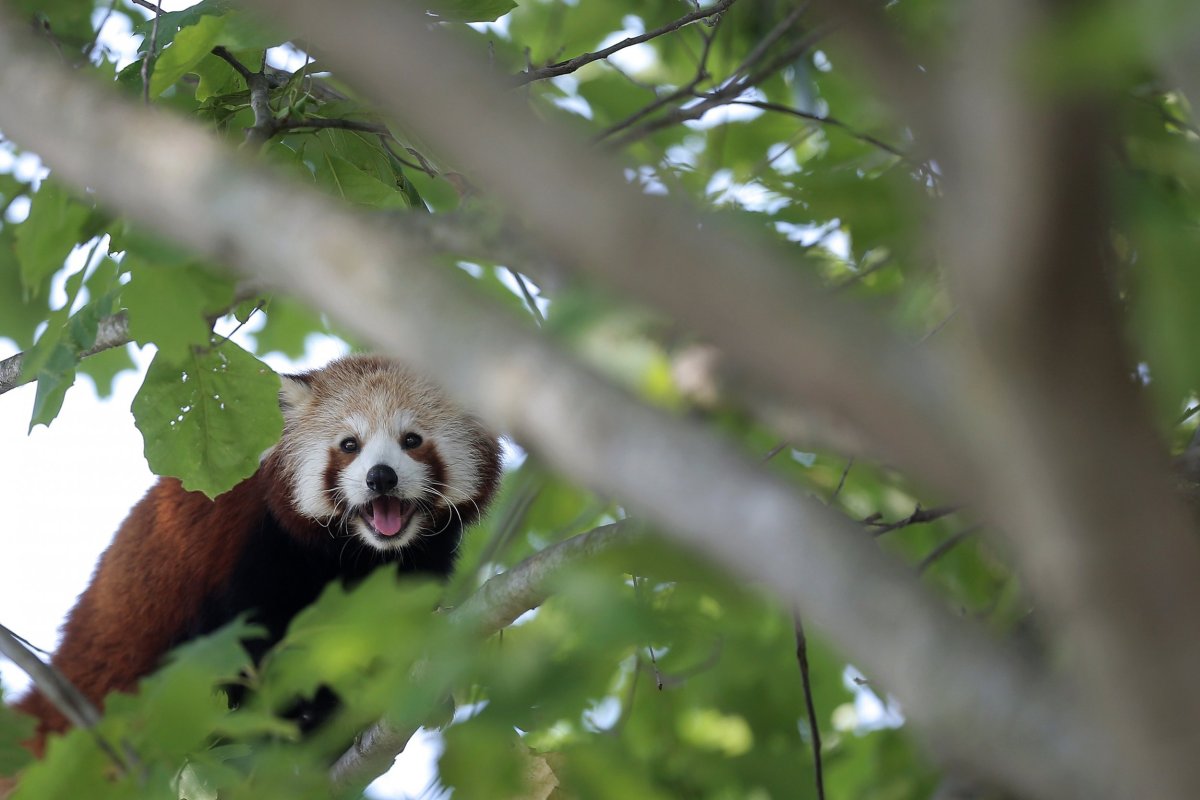On Wednesday, the oldest known giant panda died. Basi, who was 37, had been suffering from health problems since June, including cirrhosis and kidney failure, according to state-run news agency Xinhua News. A museum is being built in her honor—she was famous in China after she inspired the mascot for the Beijing Asian Games in 1990.
The species is no longer considered endangered by the International Union for Conservation of Nature, but the wild population is still only about 1,850. Wild pandas live about 15 to 20 years, although zoo pandas do tend to live longer. But while panda genes are an incredibly valuable commodity, Basi never had cubs. The longest-lived panda on the books, Jia Jia, died at 38 years old.

In Basi's honor, here are five fun facts about giant pandas that you may not know.
1. Pandas are really bad at having sex in captivity.
While the bears charm humans easily, mating is a difficult affair, particularly in zoos. First of all, in the wild pandas live alone, so males have to travel in order to track down potential mates—and get the timing right because females are only fertile for a few days. Out of the handful of males that gather, only the most dominant one gets a chance to breed. And mating itself is logistically tricky: The female needs to be in precisely the right position because male pandas have extraordinarily small penises for an animal their size. Sex usually only lasts between 30 seconds and 5 minutes, although recently pandas in Chinese centers have been breaking records by going at it for as much as 18 minutes. Zoo pandas are often artificially inseminated as well as paired with males to try to increase the odds of cubs. Because female pandas display pregnancy-like behaviors, including decreased appetite and activity. This leads to weeks-long cubwatches, like the one that ended in disappointment Thursday at the Smithsonian National Zoo in D.C. When a cub is born, it's tiny and fragile, and if twins are born the mother usually abandons one.
2. All pandas belong to China; foreign zoos just lease them.
In a practice nicknamed "panda diplomacy," China gets to use its best-loved critter to make nice with other countries. There are contracts involved, and zoos pay as much as $1 million per year for a 10-year lease. Those contracts include clauses stating that any pandas born in a zoo are by default Chinese, and can be summoned to China for breeding when they grow up. Earlier this year, Bao Bao, a female cub born at the Smithsonian National Zoo in 2013, hopped on a special FedEx plane with her keeper. When she arrived, she had to learn to like a new kind of panda bread, which is more common in Chinese centers.

3. They're carnivores that have transitioned to a diet almost entirely made up of bamboo.
Their diet is part of why giant pandas are so chill, and so often munching: They aren't actually very good at breaking down their main food source and converting it to energy. Pandas are in the order Carnivora, but—perhaps because of a busted umami receptor that lets us enjoy savory foods like meat and soy sauce—they've become total vegetarians. Their gut microbiomes haven't caught up, and still look more like those of meat-eaters, which means pandas don't get all that much nutritional value out of the bamboo stalks they love so much. In order to compensate, they have to eat between 25 and 80 pounds of bamboo every day (and remember, it's woody, so there's lots of chewing involved).
4. They have an extra thumb. Kind of.
Look at a panda's paw close up and you'll see five little paw pads nestled next to each other, plus one more on the side of its palm, like a thumb. But that's not actually an extra finger—instead, it's an outgrowth of a bone in the panda's wrist. The panda uses it to help grab onto all that bamboo it eats.

5. Giant pandas and red pandas are not related, at least not any more recently than 40 million years ago.
The black and white bears actually stole the word panda from the red panda, which gets its name from "bamboo eater" in Nepalese. Natural historian Frederic Cuvier (who also, coincidentally, coined the name mastodon based on the creature's teeth, which he thought looked like breasts), adopted the local name into the critter's formal scientific name. It wasn't until 50 years later that Western scientists stumbled on giant pandas and reused the name. Red pandas are more closely related to skunks and raccoons.
SaveSave
Uncommon Knowledge
Newsweek is committed to challenging conventional wisdom and finding connections in the search for common ground.
Newsweek is committed to challenging conventional wisdom and finding connections in the search for common ground.
About the writer
Meghan Bartels is a science journalist based in New York City who covers the science happening on the surface of ... Read more
To read how Newsweek uses AI as a newsroom tool, Click here.








